In the realm of interactive entertainment and educational tools, scratch games have carved out a significant niche. These games, characterized by their user-friendly design and emphasis on creativity, offer both children and adults a unique platform to learn, play, and express themselves. This article delves into the captivating world of scratch games, exploring their origins, appeal, educational benefits, and how they foster creativity among users of all ages.
Understanding Scratch Games
Scratch games refer to interactive experiences created using Scratch, a programming language and online community developed by the Lifelong Kindergarten Group at the MIT Media Lab. Launched in 2007, Scratch has since become a popular tool for teaching basic coding concepts through a visual, block-based interface. Scratch games range from simple animations and stories to complex interactive projects, all created by users, or “game:2uagmwejvg4= scratch,” around the world.
The Appeal of Scratch Games
What sets scratch games apart is their accessibility and versatility. Unlike traditional video games developed by professional studios, Scratch empowers anyone, regardless of age or technical background, to create and share their own games. The platform’s intuitive drag-and-drop interface allows users to assemble code blocks like puzzle pieces, making it easy to experiment with programming concepts such as loops, conditions, and variables.
This accessibility extends to gameplay as well. Scratch games cover a wide spectrum of genres and themes, from arcade classics and puzzles to simulations and educational quizzes. Players can explore games created by others, remix existing projects to add their own twists, or embark on the journey of developing original games from scratch—pun intended.
Educational Benefits of Scratch Games
Beyond entertainment, scratch games play a crucial role in education by fostering computational thinking and problem-solving skills. Through hands-on creation and experimentation, users develop an understanding of fundamental programming concepts in a playful and engaging manner. This approach not only demystifies coding but also cultivates a mindset of creativity and perseverance.
Educators worldwide have embraced Scratch as a tool for teaching STEM (science, technology, engineering, and mathematics) subjects and digital literacy. By designing games, students learn to think critically, collaborate with peers, and communicate their ideas effectively. Moreover, Scratch encourages self-expression and cultural exchange, as creators draw inspiration from their experiences and interests to develop games that resonate with diverse audiences.
Creativity Unleashed: Making Your Own Scratch Game
Creating a scratch game begins with an idea—an imaginative concept or storyline that inspires gameplay mechanics and features. Scratch provides a library of sprites (characters), backdrops, and sound effects that creators can use to bring their games to life. Using the block-based programming interface, creators sequence actions, define behaviors, and set conditions to control how sprites interact with the game environment and respond to player input.
The iterative process of game design encourages experimentation and refinement. Creators test their games, gather feedback from peers or the Scratch community, and iterate on their designs to improve gameplay, fix bugs, and enhance user experience. This iterative approach mirrors professional game development practices, empowering aspiring game designers to hone their skills and create polished projects over time.
Exploring Popular Scratch Game Genres

Scratch games encompass a diverse array of genres, each offering unique gameplay experiences and opportunities for creativity. Some popular genres include:
- Platformers: These games challenge players to navigate through levels by jumping between platforms, avoiding obstacles, and collecting items. Creators can design intricate levels using Scratch’s sprite and backdrop editor, incorporating movement patterns and physics-based mechanics.
- Puzzle Games: Puzzle games engage players with brain-teasing challenges that require logical thinking and strategy. Creators can devise puzzles using variables, conditions, and custom scripts to create dynamic gameplay experiences that encourage problem-solving and experimentation.
- Simulations: Simulation games replicate real-world activities or systems, allowing players to explore and interact with virtual environments. Creators can simulate ecosystems, weather patterns, or economic simulations using Scratch’s event-driven programming model and interactive elements.
- Educational Games: Educational games combine learning objectives with engaging gameplay mechanics to teach concepts such as mathematics, game:2uagmwejvg4= scratch geography, or history. Creators can design quizzes, interactive stories, or simulations that reinforce educational content while providing an enjoyable gaming experience.
Community and Collaboration
Central to the Scratch experience is its vibrant online community, where creators share projects, provide feedback, and collaborate on collaborative projects. Scratchers can explore projects created by others, remix existing games to add their own creative twists,game:2uagmwejvg4= scratch and participate in challenges or coding competitions. This collaborative spirit fosters a sense of community and encourages peer learning, as creators exchange ideas, share resources, and support each other’s creative endeavors.
The Impact of Scratch Games on Learning and Development
Research has highlighted the positive impact of Scratch games on learning outcomes and cognitive development. Studies have shown that engaging in creative activities like game design promotes critical thinking, problem-solving, and computational skills among children and adolescents. By designing and programming games, users develop a deeper understanding of abstract concepts, such as algorithms and debugging techniques, while building confidence in their ability to learn and apply new skills.
Moreover, Scratch games encourage digital literacy and responsible online behavior, as users learn to navigate digital environments,game:2uagmwejvg4= scratch collaborate with peers, and respect intellectual property rights. The collaborative nature of Scratch fosters a supportive learning community where creators of all ages can explore their interests, express their creativity, and contribute to a global repository of interactive projects.
FAQs About Scratch Games
- What is Scratch?
Scratch is a programming language and online community developed by the MIT Media Lab’s Lifelong Kindergarten Group. It allows users to create interactive stories, animations, and games using a block-based coding interface. - Who can use Scratch?
Scratch is designed for users of all ages, from children to adults. It is widely used in educational settings to teach programming concepts and digital literacy skills. - Do I need programming experience to use Scratch?
No, Scratch is designed to be accessible to beginners with no prior programming experience. Its visual, block-based interface allows users to assemble code blocks to create scripts and behaviors. - How can Scratch games be shared?
Scratch games can be shared on the Scratch website (scratch.mit.edu) by uploading projects to the platform. Users can explore, play, and remix games created by others, fostering a collaborative and creative community. - What educational benefits do Scratch games offer?
Scratch games promote computational thinking, problem-solving, and creativity. They encourage hands-on learning through game design, fostering skills in logic, sequencing, and debugging.
Conclusion
In conclusion, scratch games represent a unique intersection of creativity, education, and technology, empowering users of all ages to learn, explore, and express themselves through interactive game design. From creating simple animations to developing complex simulations and educational quizzes, Scratch provides a platform where imagination knows no bounds. Whether you’re a child discovering the joy of coding or an educator integrating technology into the classroom,game:2uagmwejvg4= scratch offers a wealth of opportunities to engage, inspire, and innovate.
By exploring different genres, experimenting with programming concepts, and collaborating with peers in the Scratch community, users can unleash their creativity, develop critical thinking skills, and contribute to a global repository of interactive projects. Scratch games not only entertain and educate but also empower individuals to become creators of technology, shaping the future of digital innovation one block at a time.
As technology continues to evolve and new generations of creators emerge, Scratch remains a beacon of creativity and learning in the digital landscape. Whether you’re playing, creating, or exploring, Scratch invites you to join a community where curiosity thrives, ideas flourish, and possibilities abound. Embrace the magic of Scratch games and embark on a journey of discovery, creativity, and endless possibilities in the world of interactive entertainment.
Also read this; The Beauty of Lavender






